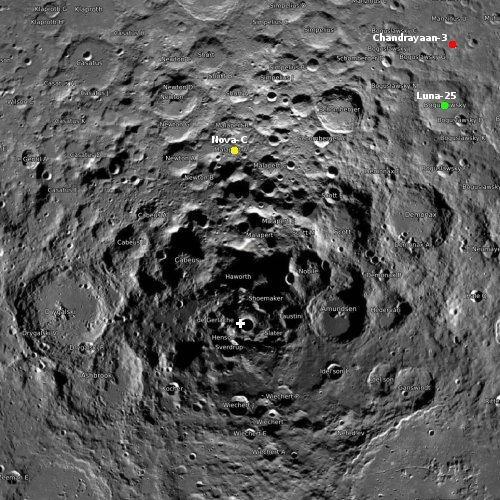SpaceX launches 22 Starlink satellites, flying its second booster for a 17th time
SpaceX tonight successfully launched 22 Starlink satellites, its Falcon 9 rocket lifting off from Cape Canaveral using a first stage booster flying for the seventeenth time.
The booster landed successfully on a drone ship in the Atlantic. The company now has two boosters that have flown that many times, plus at least one that has flown fifteen times.
The leaders in the 2023 launch race:
67 SpaceX
43 China
13 Russia
7 Rocket Lab
7 India
American private enterprise now leads China in successful launches 78 to 43, and the entire world combined 78 to 69. SpaceX by itself now trails the rest of the world combined (excluding American companies) by only 67 to 69.
SpaceX tonight successfully launched 22 Starlink satellites, its Falcon 9 rocket lifting off from Cape Canaveral using a first stage booster flying for the seventeenth time.
The booster landed successfully on a drone ship in the Atlantic. The company now has two boosters that have flown that many times, plus at least one that has flown fifteen times.
The leaders in the 2023 launch race:
67 SpaceX
43 China
13 Russia
7 Rocket Lab
7 India
American private enterprise now leads China in successful launches 78 to 43, and the entire world combined 78 to 69. SpaceX by itself now trails the rest of the world combined (excluding American companies) by only 67 to 69.

